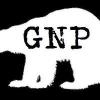

| Visitors Now: | |
| Total Visits: | |
| Total Stories: |

| Story Views | |
| Now: | |
| Last Hour: | |
| Last 24 Hours: | |
| Total: | |
Survival Foraging: Field Mint
FIELD MINT
Mentha arvensis
OTHER NAMES: Wild mint, pole mint, brook mint, indian mint, Canada mint
HABITAT: Can be found in fields, moist areas, banks of streams and lakes. The Field Mint ranges from Central Alaska and the Yukon to California.
DESCRIPTION: Can grow up to 24 inches, opposite leaves which usually have fine hairs. Plants smells minty when bruised, square stems which are usually hairy. Stem may be simple or branched. When flowering will have tight clusters of lilac like flowers growing where the leaves and stems intersect.
EDIBLE USES:
HARVEST CALENDAR:
Late Spring to Early Summer: The above ground portion. Clip the mint to a height of 4-6 inches a few times during the season, this provides continuous supply of young, supple, tender growth.
The young mint leaves are a nutritious additive to summer salads and have high content of vitamins A, C and K as well as Iron, calcium and manganese.
Add to soups, omelettes or whatever you want to have a ‘minty’ fresh flavor. Steam the mint with new potatoes, baby carrots or peas for a fresh flavor. Mint Jelly is wonderful on poultry, lamb or pork as well as wild game that may have a “gamey taste”.
You can steep the leaves for a refreshing hot or iced tea, or you can place a fresh sprig of mint in beverages or meat dishes as a garnish.
You can also line cake tines with the mint leaves instead of grease, due to the oils in the plant, this works well with light cakes and adds a mint flavor to the final product.
MEDICINAL USES:
Mint is recommended as an appetite stimulant and digestive aid. You can try sipping a small glass of mint flavored wine or tea after a big dinner to spur digestive juices to get to work.
Mint is also used for upset stomachs, nausea and morning sickness and mint-elder flower tea is recommended for crampy or delayed menstruation.
You can apply the mint as a herbal compress, and is said to relieve headaches and other pains.
Inhaling mint is a folk remedy substitute for smelling salts.
Simmer mint in a pan of water and inhale for blocked sinuses
Add leaves to herbal salves for itchy skin conditions.
Mint Essential oils can be diluted in a cup of water to relieve gas and mint juice can be used to sooth earaches.
OTHER USES:
Mint can be used for cosmetic uses as well. Add to herbal baths to soothe and soften skin and to foot baths to sooth aching feet or calluses.
Mint is useful in facial steams and masks for dry skins.
Mint Vinegar, diluted with water is a good hair rinse for dandruff.
PURE mint oil can be added to shampoos, massage oils, herbal asalves, soaps as well as foods and liquors. The oil can be made through distillation, but is very intensive as it takes 300 pounds of mint to yield on pound of oil.
RECIPE FOR MINT MASK FOR DRY SKIN:
1/4 cup fresh mint
1/2 avocado
2 tb wheat germ oil
2 tb liquid lecithin
1 dropper vitamin E
1 cup mint tea
Place all ingredients in a blender. Smooth on clean face and throat area, leave on for 15 minutes and wash with mint tea.
CAUTION: Large amounts of mint should be avoided by pregnant women as it has been known to cause miscarriages
2012-11-20 10:42:57
Source: http://www.greatnorthernprepper.com/survival-foraging-field-mint/
Source:




